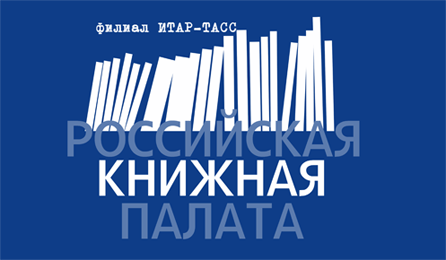Timkin Yu. N. “Face of the village”: Activities of the Vyatka Provincial Committee of the All-Union Communist Party (Bolsheviks) to revitalize rural and volost organizations in 1924–1926 // The Russian Peasant Studies. 2024. V.9. №2. P. 89-108.
DOI: 10.22394/2500-1809-2024-9-2-89-108
Annotation
The author considers the litsom k derevne (‘turning to the village’) policy implemented by the ruling party in 1924–1926. The article is based on the materials of the Central State Archive of the Kirov Region and on the principles of historicism, objectivity and historical institutionalism. The author focuses on the activities of the commission for work in the village of the Vyatka Provincial Committee and its practical measures to create a non-party activist group, attract peasants and strengthen the lower Soviet level. The study of the peasant everyday life in one volost of the province, in particular of the communist peasants’ farms, showed that many members of rural and volost party organizations were not much different from the so-called “well-off village elite” and were closely connected with it. By joining the ruling party, young active peasants got a good chance to improve their social status and make a career. The provincial committee aimed at encouraging poor peasants, hired farm workers, peasants who served in the Red Army, Komsomol members and activists of delegate women’s meetings to join the party by promoting them to various paid positions in the Soviet and party apparatus and cooperation. The author argues that the litsom k derevne policy allowed the party elite to organize the rural poor and farm workers, thus, creating “rural proletariat”, splitting the village, and “making” a “class” of kulaks as its main enemy in the village.
Keywords
Vyatka Province, provincial committee, commission, volost organizations of the RCP(B), communists, peasants, poor people, kulaks.
About the author
Timkin Yuri N., PhD (History), Associate Professor, Department of Theory and History of State and Law, Vyatka State University. Moskovskaya St., 36, Kirov, 610000, Russia.
E-mail: This email address is being protected from spambots. You need JavaScript enabled to view it.
The article was submitted on 09.01.2024.
Goryushkina N. E. Peasants’ exercise of the rights to alcohol trade in excise Russia (1863–1894) // The Russian Peasant Studies. 2024. V.9. №2. P. 39-60.
DOI: 10.22394/2500-1809-2024-9-2-39-60
Annotation
The author considers the peasants’ rights to open or close pubs under the excise system in Russia. Such an analysis is important for understanding the communal legal consciousness, peasant perception of the alcohol trade and consumption, external and internal factors of peasant behavior at communal gatherings, and the government reasons for refusing free alcohol trade in the 1890s. Rural peasant community was considered by the government as a stronghold of national stability, sobriety and order; therefore, it was given the right to authorize or prohibit the sale of alcohol in villages. In fact, moral principles did not prevail in the communal perception of alcohol trade. Most decisions of peasant gatherings had no moral basis, and a permission to open a pub was usually based on the wine merchant’s bribe. Despite legislative prohibitions, peasant gatherings accepted backsheesh in alcohol, money or their combination. In the excise period, the number of pubs remained high, there was a monopolization trend, and drunkenness was a serious social problem. The author argues that all attempts to make peasants guardians of the state interest in alcohol trade were unsuccessful. The ease with which peasant votes were bought, omnipotence of rural authorities, and peasant dependence on the wine merchant forced the government to involve provincial and district authorities in the public control of alcohol trade. However, the result did not meet expectations; thereby, the government banned free alcohol trade and introduced wine monopoly.
Keywords
Peasants, excise reform, (free) alcohol trade, pub, peasant gathering and its decisions, sobriety.
About the author
Natalya E. Goryushkina, DSc (History), Head of the Department of History and SocialCultural Services, Southwestern State University. 50 years of October St., 94, 305040, Kursk, Russia.
E-mail: This email address is being protected from spambots. You need JavaScript enabled to view it.
The article was submitted on 06.12.2023.
Crovetto M. M. Peasants and agricultural wageworkers in Argentina in the 20th — 21st centuries: Some paradoxes of the dichotomy ‘rural–urban’ // The Russian Peasant Studies. 2023. V.8. №4. P. 72-82.
DOI: 10.22394/2500-1809-2023-8-4-72-82
Annotation
The article proposes an unusual starting point to consider the peasantry in Argentina — the concept of rurality. This paper is based on the already highly debated conceptualizations of the rural–urban question in dichotomous terms; the author develops an analytical approach that implies a complex perspective of spatiality in non-binary forms. Such a task involves the integration of other variables in the study of societies connected with the agrarian worlds, already stripped of obsolete univocal characteristics. To solve this task, the author revises some of the discussions of peasant decomposition and wage earning in Argentina. These debates have renewed the understanding of the present peasant and agricultural wage-earning in Argentina, given that historically there were only peasants in the ‘non-pampean’ area (outside the Pampas region). It was not until the 1960 that the peasant self-perceptions and organizations emerged under the slowing demand for labor in the industrial sector. After the analysis of documentary sources in various regions of the country, the author argues that there are rural workers of non-peasant origin, which can be empirically proved. They depend on subsistence activities with the classic peasant features. Agricultural workers and inhabitants of rural worlds are not necessarily the same subjects mobilized daily and being the result of the agro-industrial activities since the 1980s. Since then, they have acquired typical characteristics of the globalized capitalist mode of production. Thus, paradoxically, in the transition from the 20th to the 21st century, in some regions of Argentina globalization creates the peasantry.
Keywords
Peasants, agricultural wageworkers, rural societies, urban societies, Argentina, 21st century.
About the author
Crovetto María Marcela, DSc (Social Sciences), Adjunct Researcher, National Scientific and Technical Research Council, Gino Germani Research Institute; Professor, Sociology Department, Social Sciences Faculty, University of Buenos Aires. J. E. Uriburu St., 950, Buenos Aires, Argentina, 1414.
E-mail: This email address is being protected from spambots. You need JavaScript enabled to view it.
Ippolitov V.A. Factors affecting the health of the peasants from the “revolutionary turning point” generation in the 1920s (on the example of the Tambov Province) // The Russian Peasant Studies. 2023. V.8. №2. P. 46-63.
DOI: 10.22394/2500-1809-2023-8-2-46-63
Annotation
The author identifies factors that affected peasants’ health in the 1920s based on the unpublished documents of the Health Department of the Executive Committee of the Tambov Regional Council of Workers’, Peasants’ and Red Army Deputies from the State Archives of the Tambov Region. The article focuses on the generational history of rural society, on the “revolutionary turning point” generation, whose representatives were born at the turn of the 19th–20th centuries, mainly in the 1890s. The author shows the influence of malnutrition and famine of 1924–1925 on the health of rural residents and the negative consequences of eating various food substitutes and concludes that the famine affected the most the poorest peasants from the “revolutionary turning point” generation. The article presents a comparison of positive and negative factors affecting peasants’ health, focusing on the issues of medical care, morbidity, nutrition, water supply and other factors of the population health status. The author argues that the chronic underfunding of the healthcare system did not allow to provide the rural population with quality medical care, and malaria and syphilis were the most common diseases. The author makes a conclusion about the unsatisfactory health of the peasants from the “revolutionary turning point” generation in the 1920s, referring to the death and birth rates in the countryside and to the relationship between the demographic behavior and depeasantization.
Keywords
Peasants, famine, epidemic, mortality, healthcare, party, NEP, generations.
About the author
Ippolitov Vladimir A., PhD (History), Senior Researcher, Tambov State Technical University. Sovetskaya St., 106/5, Tambov, 392000.
Е-mail: This email address is being protected from spambots. You need JavaScript enabled to view it.
The conflict of generations in the spiritual sphere of rural society in the second half of the 1920s
May 30 2023Slezin A.A. The conflict of generations in the spiritual sphere of rural society in the second half of the 1920s // The Russian Peasant Studies. 2023. V.8. №1. P. 45-66.
DOI: 10.22394/2500-1809-2023-8-1-45-66
Annotation
The author identifies the anti-religious aspects of the Soviet “turning to the village” policy, focusing on the main directions in the evolution of anti-religious activities of the communist youth in the mid-1920s and on the changes in the value orientations of peasant generations in the critical period of the Russian history. The study aims at assessing the peasantry’s reaction to the “revolutionary turn” generation (born at the turn of the 19th — 20th centuries) activities and the reasons for the generational conflict, based on the analysis of the spiritual sphere of the Russian village. The author argues that this conflict turned into an intergenerational gap in the Russian village, which is an understudied aspect of the village split into antagonistic camps, used by the Party leadership to accelerate socialist modernization. The anti-religious activities of communist organizations after the “turning to the village” policy seemed to significantly soften forms and methods of the work with the peasantry, but a more thorough analysis shows that such activities remained a powerful factor of the conflict. For instance, value orientations of peasant generations were becoming more different. The spiritual legacy, which the “revolutionary turn” generation was to pass on to its successors, was rejected by the younger generation. The “new faith” completely denied the old traditions and irreconcilable theomachism. Peasants of the “revolutionary turn” generation expressed their attitude to anti-religious activities in the form of hooliganism, and radical measures were a response. The study of the national youth movement (including the negative one) and of the features of the intergenerational conflict in the Russian village are of particular relevance in the search for an educational model that meets the contemporary demands of the state and society.
Keywords
Peasants, religion, generations, revolutionary turn, youth, Komsomol, intergenerational gap, “turning to the village” policy, atheist alliance, NEP.
About the author
Slezin Anatoly A., DSc (History), Chief Researcher, Tambov State Technical University, Sovetskaya St., 106/5, Tambov, 392000.
E-mail: This email address is being protected from spambots. You need JavaScript enabled to view it.
Fedotova A. A. “Cattle grazing is prohibited after the bison was killed in Białowieża Forest”: Woodland grazing as a traditional form of the peasant forest management in the long 19th century // The Russian Peasant Studies. 2022. V.7. №3. P. 55-88.
DOI: 10.22394/2500-1809-2022-7-3-55-88
Annotation
The article considers one of the key resources for peasants in Eastern Europe — wood pastures. Based on the new archival materials, the author shows that peasant communities, in the spirit of James Scott, consistently sabotaged the state efforts to ban woodland grazing. During the long 19th century, the state was strengthening control over many aspects of the rural economic life, which gradually made peasant conflicts with the state forest administration more acute. The author applies the casestudy approach to the relationships of peasants and local and metropolitan administration in Białowieża Forest. Its unique feature is a long history of the effective protection measures which facilitated finding sources on the topic. The research revealed the struggle for the control over forest resources between peasants and officials as experts in the ‘rational’ forestry. In the long 19th century, peasants used all available means of resistance: petitions to the authorities of all levels, sabotage of administrative orders, bribes to forestry personnel, and direct violations of orders. The decades of conflicts prove that peasant communities only partially followed the rules introduced by the state administration which tried to change the principles of forestry management to make forests more profitable and ‘rational’. The administration spent significant resources to control wood grazing but achieved very modest results in terms of both reducing the number of livestock in forests and collecting compensation for the damage from ungulates. In the second half of the 19th — early 20th century, there were the most important changes associated with the more consistent and strict control over traditional forest resources, especially in 1889–1915. The administration’s reactions to the peasant petitions were sympathetic and positive at the provincial and ministerial levels, which can be explained by the shortage of pasture and fodder and the general paternalistic sentiments of the government. The administration tried not so much to increase income from wood grazing as to ‘accustom’ peasants to the idea that forests were rather private or state than public property.
Keywords
Natural resources, Białowieża Forest, long 19th century, wood pastures, peasants, Russian Empire.
About the author
Fedotova Anastasia A., PhD (Biology), Senior Researcher, Saint Petersburg Branch, S. I. Vavilov Institute for the History of Science and Technology of the Russian Academy of Sciences; Universitetskaya Nab., 5/2, Saint Petersburg, 199034, Russia.
E-mail: This email address is being protected from spambots. You need JavaScript enabled to view it.
Chayanov A.V. Main Ideas and Methods of Social Agronomy (Part 2) (Article of A.V. Chayanov) // The Russian Peasant Studies. 2020. V.5. №2. P. 6-55.
DOI: 10.22394/2500-1809-2020-5-2-6-55
Annotation
The second part of Chayanov’s book Main Ideas and Methods of Social Agronomy consists of chapters presenting the specific features of the Russian social-agronomic work among the peasantry. In the first chapters (published in the previous issue of the Russian Peasant Studies), Chayanov focused on the strategic and worldview aspects of social agronomy; in the second part, he analyzes tactical directions of social-agronomic work: methods of oral, social-agronomic propaganda; conversations, lectures, courses and agronomic consulting; agricultural exhibitions, demonstration plots, model farms and peasant excursions; agricultural warehouses, rental points and grain-cleaning stations; organizational work of the agronomist; social agronomy and cooperation; the equipment of the agronomic station; registration and evaluation of social-agronomic activities. In all these chapters, Chayanov shows how creative the work of the social agronomist should be, how many diverse and unexpected challenges he faces when interacting with peasant communities, audiences and households. The interaction of social agronomy with another influential institution—agricultural cooperation—is of particular interest. Chayanov analyzes in detail the contradictions and distinctions in the work of agronomists and cooperators, in their common tasks of developing and improving the peasant life. Despite the fact that the book was published a hundred years ago, it is not only of historical interest but presents many valuable answers and practical recommendations for the contemporary agricultural consulting and rural development activists.
The publication with comments was prepared by A.M. Nikulin.
Keywords
social agronomy, peasants, agricultural education, agrarian reform, agricultural cooperation
About the authors
Editor: Nikulin Alexander M., PhD (Economics), Head of the Center for Agrarian Studies, Russian Presidential Academy of National Economy and Public Administration; Head of the Chayanov Research Center, Moscow School of Social and Economic Sciences. 119571, Moscow, Vernadskogo Prosp, 82.
E-mail: This email address is being protected from spambots. You need JavaScript enabled to view it.
Translator: Trotsuk Irina V., DSc (Sociology), Senior Researcher, Center for Agrarian Studies, Russian Presidential Academy of National Economy and Public Administration; Researcher, Chayanov Research Center, Moscow School of Social and Economic Sciences. 119571, Moscow, Vernadskogo Prosp, 82.
E-mail: This email address is being protected from spambots. You need JavaScript enabled to view it.
Chayanov A.V. Main Ideas and Methods of Social Agronomy (Part 1) (Article of A.V. Chayanov) // The Russian Peasant Studies. 2020. V.5. №1. P. 6-30.
DOI: 10.22394/2500-1809-2020-5-1-6-30
Annotation
The book by Alexander Chayanov Main Ideas and Methods of Social Agronomy is one of his key interdisciplinary works written and published at the beginning of the October Revolution and the Civil War. In this work, the economist Chayanov is a social philosopher considering the rural evolution as determined not only by the market and the state but mainly by the will and knowledge of rural households that can be led to the sustainable rural development by the organized public mind (a kind of a synonymous for civil society). Its most important social institution in the rural sphere is social agronomy. Chayanov emphasizes that social agronomy is one of the youngest social institutions. It appeared in the late 19th century in Europe and North America and in three decades turned into an influential movement uniting agrarian scientists, agrarian activists and a huge number of peasants striving for agricultural knowledge for more productive and cultural development of their households.
In this book, Chayanov is not only a social philosopher but also a social activist and organizer, teacher and psychologist. The book is based on his seminar, ‘Social Agronomy and Agricultural Cooperation’, which incorporated many years of personal communication with peasants, agronomists and agrarian scientists about dissemination and application of agrarian knowledge by peasants.
We publish the first five chapters of the book about the tasks and methods of social-agronomic work, its program and organization. For the contemporary reader, this publication is not only of historical interest. Chayanov’s ideas are still relevant for the effective interaction of professional agrarians with the rural population, peasants and farmers in the organization of agricultural knowledge, agricultural cooperatives and agricultural consulting.
The publication with comments was prepared by A.M. Nikulin.
Keywords
social agronomy, agricultural evolution, peasants, state, agrarian reforms, agrarian knowledge, agricultural cooperation
About the authors
Editor: Nikulin Alexander M., PhD (Economics), Head of the Center for Agrarian Studies, Russian Presidential Academy of National Economy and Public Administration; Head of the Chayanov Research Center, Moscow School of Social and Economic Sciences. 119571, Moscow, Vernadskogo Prosp, 82.
E-mail: This email address is being protected from spambots. You need JavaScript enabled to view it.
Translator: Trotsuk Irina V., DSc (Sociology), Senior Researcher, Center for Agrarian Studies, Russian Presidential Academy of National Economy and Public Administration; Researcher, Chayanov Research Center, Moscow School of Social and Economic Sciences. 119571, Moscow, Vernadskogo Prosp, 82.
E-mail: This email address is being protected from spambots. You need JavaScript enabled to view it.
Chayanov A.V. A Short Course on Cooperation (Article of A.V. Chayanov) // The Russian Peasant Studies. 2019. V.4. №2. P. 8-56.
DOI: 10.22394/2500-1809-2019-4-2-8-56
Annotation
Translated from: Chayanov A., A Short Course on Cooperation Published by the Central Partnership “Cooperative Publishing House,” Moscow, 1925.
Peasant cooperative movement was one of the most important topics in Alexander Chayanov’s scientific, organizational and pedagogical work. He wrote many articles and books on agricultural cooperation, and had hundreds of classes with students at universities and with peasants to explain and discuss various cooperative issues. Finally, Chayanov presented his conception of the ways to develop agricultural cooperation in his famous book Basic Ideas and Forms of Peasant Cooperation2. At the same time, Chayanov was a talented and passionate popularizer and propagandist of cooperative knowledge among the wider population. Thus, on the basis of his lectures for the Old Believers’ Agricultural Courses “Friend of Land” in Moscow in 1915, he published a booklet A Short Course on Cooperation, and in the next 10 years it was reprinted four times and became a desk book on cooperation for many Russian peasants, agronomists, and activists of rural development. This short course presents clear and unambiguous definitions of cooperation and its aims; each chapter is illustrated with popular historical and contemporary examples of the cooperative movement and of the interaction between peasant farms and specific types of cooperatives. This booklet reminds of two great genres of world literature. On the one hand, it is a propaedeutic ABC of Cooperation, like Leo Tolstoy’s ABC for Children. On the other hand, it is a political-economic Cooperative Manifesto, similar to Karl Marx and Friedrich Engels Communist Manifesto, in which Chayanov describes a fascinating struggle of the Russian and international cooperative movement for the new just social world. Under the current rural development, Chayanov’s Short Course on Cooperation is not only of a historical interest; it is an outstanding example of the unity of cooperative thoughts and deeds aimed at improving the lives of the broad strata of rural workers all over the world. This Chayanov’s work was translated into English from its fourth and last lifetime edition of 19253.
The publication with comments was prepared by A.M. Nikulin.
Keywords
agricultural cooperation, peasants, consumer cooperatives, credit cooperatives, marketing cooperatives, dairy cooperatives, cooperative solidarity
About the authors
Editor: Nikulin Alexander M., PhD (Economics), Head of the Center for Agrarian Studies, Russian Presidential Academy of National Economy and Public Administration; 119571, Moscow, Prosp. Vernadskogo, 82.
E-mail: This email address is being protected from spambots. You need JavaScript enabled to view it.
Translator: Trotsuk Irina V., DSc (Sociology), Senior Researcher, Center for Agrarian Studies, Russian Presidential Academy of National Economy and Public Administration; Professor, Sociology Chair, RUDN University. Prosp. Vernadskogo, 82, Moscow, Russian Federation, 119571.
E-mail: This email address is being protected from spambots. You need JavaScript enabled to view it.
Makarov N.P. At the great crossroads. The comparative analysis of the evolution of agriculture in China, the United States of North America, the USSR, and Western Europe (Article of N.P. Makarov) // The Russian Peasant Studies. 2019. V.4. №1. P. 6-21.
DOI: 10.22394/2500-1809-2019-4-1-6-21
Abstract
This article published in the mid-1920s in the Peasant International was written by an outstanding Russian agrarian scientist and a prominent representative of the organization-production school Nikolai Pavlovich Makarov (1887–1980). It is quite strange that this article was not listed in the bibliographies of Makarov’s works although it is absolutely important for the understanding of the evolution of world agriculture in the 20th century. Moreover, the reader will see that in the second half of the 1920s the ideas of this article were developed in the works of other representatives of the organization-production school — A.V. Chayanov, G.S. Studensky, A.A. Rybnikov. As the title and the foreword of the article show, the author seeks to provide an analytical description of the main directions of the world agrarian evolution of the 1920s and its possible alternatives on the example of four main macro-regions of world agriculture: the USA, China, Western Europe and Russia. First the author focuses on the two so-called “poles” of agrarian development — the United States and China — and argues that “old” labor-intensive agrarian China and the “young” capital-intensive agrarian United States are the exact opposites of each other. It is between these poles that the paths of the agricultural evolution of most countries of the world, including Europe and Russia, are located. Makarov concludes with a preliminary diagnosis of the approaching “great agrarian crossroads” of world agriculture. The publication with comments was prepared by A.M. Nikulin.
Keywords
agriculture, USA, China, Western Europe, Russia, agrarian evolution, peasants, farmers
About the authors
Makarov Nikolai Pavlovich
Editor: Nikulin Alexander M., PhD (Economics), Head of the Center for Agrarian Studies, Russian Presidential Academy of National Economy and Public Administration; 119571, Moscow, Prosp. Vernadskogo, 82.
E-mail: This email address is being protected from spambots. You need JavaScript enabled to view it.





















